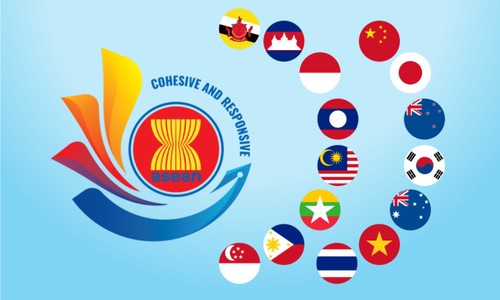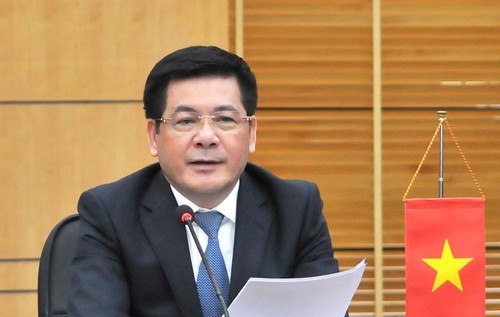 RCEP is conceptualized in November 2012 to attain a comprehensive and mutually beneficial economic partnership agreement. (Photo: vnexpress) RCEP is conceptualized in November 2012 to attain a comprehensive and mutually beneficial economic partnership agreement. (Photo: vnexpress) |
Soon after RCEP took effect at the beginning of this year, members began removing tariffs on at least 64% of tariff lines.
After 20 years, Vietnam will have to remove nearly 90% of tariff lines for partner countries which, in return, will have to remove more than 90% of tariff lines for Vietnam. Other ASEAN members will remove almost all tariffs for Vietnam.
According to Nguyen Thi Quynh Nga, Deputy Director of the Multilateral Trade Policy Department, Ministry of Industry and Trade, thanks to the harmonization of rules of origin in the RCEP Agreement, more Vietnamese exports will enjoy preferential tariffs because their input materials come mainly from RCEP markets.
“A difference of this agreement is that RCEP offers a harmonized set of rules of origin instead of applying 5 sets of rules of origin regulated by 5 free trade agreements between ASEAN and its partners when exporting goods. It means that now Vietnamese enterprises can use input materials from any RCEP countries to produce goods and export them to any RCEP member and enjoy preferential tariffs,” said Nga.
Because RCEP creates a fierce competitive environment, Vietnamese businesses have adopted trade remedies that many countries impose on exports from other countries, including anti-dumping, anti-subsidy and safeguard cases.
RCEP is helpful for Vietnamese businesses, who are seeking cooperation with foreign partners.
 Minister of Industry and Trade Nguyen Hong Dien (Photo: Tran Viet/VNA) Minister of Industry and Trade Nguyen Hong Dien (Photo: Tran Viet/VNA) |
Minister of Industry and Trade Nguyen Hong Dien said, “The enforcement of RCEP with a single rule of origin applied for 15 countries is expected to create great opportunities for the Vietnamese business community to develop new supply chains. It’s hoped it will open a shared production space and a stable and long-term export market for the region because many of the RCEP signatories are a large raw material supply source. China, South Korea, and Japan are Vietnam’s leading trading partners, accounting for half of Vietnam’s total trade turnover.”
“It is both an opportunity and a challenge for Vietnamese enterprises to diversify and optimize input materials to increase productivity and exports, improve product quality and competitiveness, and contribute to national socio-economic development,” said Dien.
RCEP countries are the largest exporters to Vietnam. They export raw materials, machinery, and equipment to serve many manufacturing and export industries.
This is an opportunity for Vietnamese businesses to get low priced inputs and quality technology to improve their production capacity and competitiveness and comply with the rules of origin to enjoy preferential tariffs when exporting to RCEP.
But using materials from RCEP countries may make it more difficult for Vietnamese businesses to compete in the domestic market.
Nguyen Anh Duong of the Central Institute for Economic Management (CIEM) urged businesses to carefully study RCEP commitments, avoid separating RCEP from other FTAs in their business strategies, consider RCEP the center of supply chains, and focus on quality standards for their exported goods.
Duong explained, “Vietnamese enterprises must have strategies to improve their export capacity by focusing on both price and quality. It’s necessary to meet new norms for entering markets like the Chinese market, which is tightening requirements. In addition to exporting to Japan and the Republic of Korea, two important and high-potential markets, Vietnamese exporters should take advantage of opportunities to gain technology from these foreign partners.”
The Center for WTO and International Trade of the Vietnam Chamber of Commerce and Industry says RCEP partners are Vietnam’s largest foreign investors. Six of the 10 largest foreign investors in Vietnam are RCEP countries (The Republic of Korea, Japan, Singapore, China, Malaysia, and Thailand).